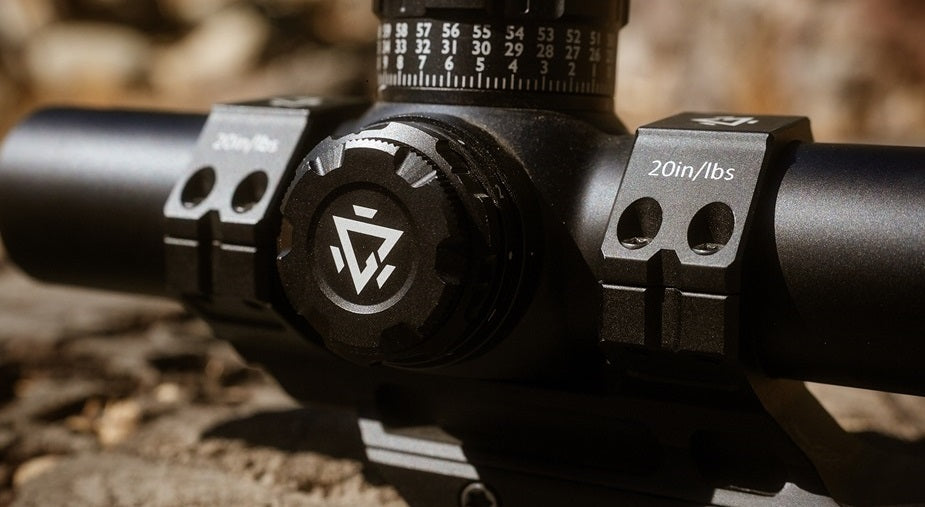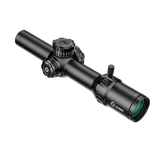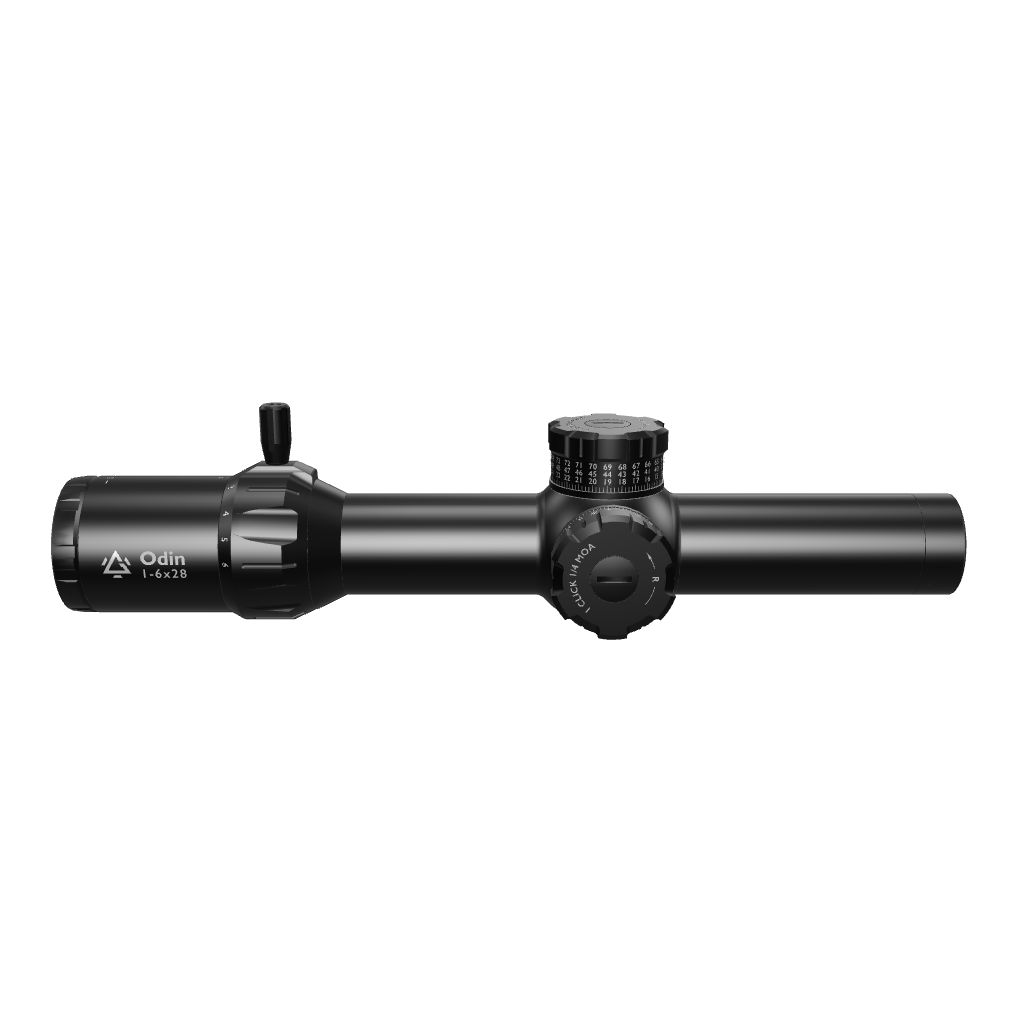HOW AND WHERE SHOULD YOU STORE YOUR LPVO?
Apart from skill and experience, there are many other factors that determine your success as a shooter. One of those is how well you maintain your gear and whether or not you know how to store it properly. Your rifle scope, especially, is more delicate than other types of accessories, so it requires even additional care. In this blog, we’ll explore the best practices for storing your LPVO scope to ensure it remains in optimal condition for years to come.
CLEAN BEFORE STORING
Always clean your LPVO before storing it. This must not be just basic cleaning, either: the optic must be thoroughly cleaned, ensuring that it is cleared of all the dust, dirt, and fingerprints that may have clung to it during your shooting session.
If left untouched, all this dirt will accumulate on the lens, and before long, seeing through the lens could become a challenge. Follow these steps to ensure the cleaning process is thorough and effective:
Tips For Cleaning Your LPVO
- Use a Microfiber Cloth: A microfiber cloth is ideal for cleaning an LPVO lens because it does not scratch the glass. To clean your lens, gently wipe with a soft microfiber cloth.
- Lens Cleaning Solution: If there are stubborn smudges or dirt, do not press hard (even with the microfiber cloth). Apply a few drops of lens cleaning solution first (it is specifically designed to clean optics). Take note that you cannot use ordinary household cleaning solutions here as they might damage the optic.
- Cleaning the Body: For the exterior of the scope, use microfiber cloth to wipe down. Ensure the cloth is dry, and use it to scrub away any dust or grime.
USE A PROTECTIVE CASE
The best way to safeguard your LPVO from impacts, moisture, dust, or any other hazard is to tuck it into a quality protective case. These cases are usually provided along with the LPVO or sold separately by the manufacturer. It is always advisable to get one; a protective case is as close as you will come to storing your LPVO in the perfect condition.
Hard Cases are a Great Option
Hard cases are arguably the best protective cases for LPVOs. They are hard on the outside to prevent external damage, but the insides are also laced with foam padding that can absorb shocks and protect the scope from jarring impacts.
Gunnr, for example, is a new rifle scope provider that is already winning the hearts of shooters with its exceptionally durable Runes Box. It is constructed from high-strength engineering plastics that can bear over 440 lbs. Its robust design ensures that your rifle scope and other essentials are well-protected, making it a reliable choice for even the toughest environments.
- Soft Cases: If a hard case isn’t available, you can consider a padded soft case. It may not be as protective as a hard case, it can still provide a layer of protection against scratches and dust.
- Organizing Your Case: Just having a hard case does totally solve the problem. The manner in which the objects are placed in the case also matters. Ensure it is snugly fitted to prevent movement during transport. For this, you can use additional padding.
Keep Your Scope in a Controlled Environment
Environmental factors matter because they can significantly impact the performance and longevity of your LPVO. Granted, high-quality scopes like Gunnr’s Odin scopes can withstand extreme temperatures. However, there is a limit to how much any scope can withstand extreme temperatures.
Too much heat or cold can damage some internal components, especially if they are exposed for too long. For maximum protection, it is advisable to store your scope in a cool place, ideally between 60°F and 75°F (15°C to 24°C).
- Humidity: You have to watch out for humidity when storing your scope because high humidity is often one of the major causes of fogging inside the scope. High humidity is also extremely conducive for the growth of mold. So, aim for an environment that is dry, ideally one with a humidity level below 50%.
- Avoiding Sunlight: Direct sunlight is not very conducive for your scope because it can cause heat buildup which could damage the optics and coatings. So, when choosing a spot to store your LPVO, stay away from windows or direct light sources.
USE LENS CAPS
Lens caps are a practical solution for keeping your LPVO’s lenses free from scratches, dust, and moisture. After cleaning, simply replace the lens caps before storing them. This is a simple step, but it can fo a long way to preventing damage over time.
Use Caps that Fit: Ensure that your lenses fit properly and they are securely locked in. Caps that don’t fit securely could be accidentally dislodged during transport or storage.
SECURE MOUNTING
Whenever you remove the LPVO from your firearm, store it separately so that it does not continue to put unnecessary pressure on the mounting system. If you use a solid and dependable mount, like the Sleipnir-ZT-30, which helps maintain zero or simply prefer to have the scope mounted even during storage, then ensure that it is securely fastened. If the mounts are loose, the scope could easily become misaligned, and you might lose your zero.
REGULAR CHECKS
Even if you take all the above precautionary steps, it is still advisable that you check your LPVO regularly. Your LPVO still wears out every time you use it, and so it is important to check it regularly for any signs of wear or damage.
Checking must not be an intensive process. You should be able to detect if something is wrong if you follow these steps.
- Visual Inspection: Look for scratches on the lenses, damage to the body, or any signs of moisture inside the scope.
- Function Check: Ensure that all adjustments (zoom, parallax, etc.) work smoothly and that the reticle is clear and intact.
- Re-zero Before Use: If the LPVO has been stored for an extended period, check the zero before taking it out for use.
ADDITIONAL TIPS FOR OPTIMAL STORAGE
Use Silica Gel Packs
If you live in a really humid area, or if there is a significant risk of moisture damage, you have to at least consider using silica gel packs. A couple of these packs in your storage case will absorb the moisture and keep the environment dry.
Avoid Heavy Objects
Do not place heavy objects on top of your case or scope. The reason is pretty obvious: excessive weight can cause damage, misalignment, or even breakage.
RECOMMENDATION: GUNNR SCOPES
Gunr scopes are at the cutting edge of Low-Power Variable Optics (LPVO) technology, offering a range of features designed to elevate your shooting experience.
All Gunnr scopes feature illuminated reticles allowing for precise targeting across diverse lighting conditions, ensuring clarity and precision with every shot.

The Zero-Stop function provides a quick and reliable return to zero, giving you the confidence to focus on your target without hesitation.
These scopes are built to endure the toughest environments, the Gunnr Odin boasts IP67 dust and waterproof ratings, maintaining peak performance regardless of the elements.
Their German Schott ED Glass ensures exceptional clarity and light transmission, setting the standard for optical excellence.
CONCLUSION
By following these best practices—cleaning before storage, using a protective case, maintaining a controlled environment, utilizing lens caps, securing mounting, and conducting regular checks—you can protect your investment and enjoy reliable performance whenever you need it.







